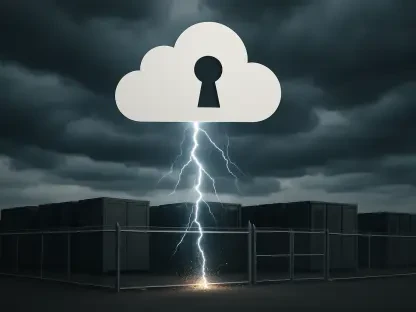Introduction to Cyber Threats in the Federal Judiciary
Imagine a scenario where sensitive legal documents, including sealed indictments and confidential search warrants, are exposed to unauthorized eyes due to a sophisticated digital breach. This alarming reality recently struck the US federal judiciary, highlighting the fragility of critical systems like the Case Management/Electronic Case Files (CM/ECF) and the Public Access to Court Electronic Records (PACER). These platforms are essential for legal professionals managing case documents and for public access to court records, making their security paramount to national justice and transparency.
The significance of this issue cannot be overstated, as cyber attacks on government institutions threaten not only data integrity but also public trust in the judicial process. This FAQ aims to address pressing questions surrounding the vulnerability of federal court systems to cyber threats, exploring the nature of recent attacks, their implications, and potential solutions. Readers can expect to gain a comprehensive understanding of the challenges faced, the responses underway, and the steps needed to safeguard these vital systems.
This discussion will delve into specific aspects of the breach, the broader context of cybersecurity in the judiciary, and expert insights on fortifying defenses. By breaking down complex issues into clear, actionable answers, the goal is to inform and equip stakeholders with the knowledge to navigate this evolving threat landscape.
Key Questions on Cybersecurity in US Federal Courts
What Happened in the Recent Cyber Attack on Federal Court Systems?
The US federal judiciary recently faced a severe cyber attack targeting its electronic case filing systems, specifically the CM/ECF and PACER platforms. These systems are crucial for managing legal documents and providing public access to court records, but the breach compromised highly sensitive information, including sealed indictments and confidential arrest details. Such exposure undermines the confidentiality essential to many legal proceedings and poses risks to ongoing cases.
The incident’s impact extends beyond immediate data loss, raising concerns about the security protocols protecting these digital infrastructures. While most documents in these systems are publicly accessible to uphold transparency, the unauthorized access to restricted data reveals significant gaps in current defenses. This breach serves as a wake-up call to reassess how sensitive judicial information is stored and protected in an increasingly digital age.
Although exact details on the scale and method of the attack remain undisclosed, the sophistication suggests a serious threat, potentially involving advanced actors. The lack of clarity on how the breach occurred underscores the urgency of strengthening cybersecurity measures to prevent further unauthorized access to critical legal data.
Who Might Be Behind These Cyber Attacks?
Speculation abounds regarding the perpetrators of the cyber attack on the federal court systems, with many pointing toward nation-state-affiliated actors due to the advanced nature of the breach. The complexity and precision of the attack indicate a level of expertise and resources often associated with government-backed entities rather than individual hackers or smaller criminal groups. This raises alarming questions about the motives, which could range from espionage to disrupting judicial processes.
Nick Tausek, a lead security automation architect at Swimlane, emphasized the gravity of this incident, noting that the identity of the attackers and their entry methods remain unclear. This uncertainty complicates efforts to attribute responsibility and develop targeted defenses. The possibility of state-sponsored involvement heightens the stakes, as it suggests a strategic intent to exploit vulnerabilities in national infrastructure.
Without concrete evidence, pinpointing the exact culprits is challenging, but the incident highlights the need for robust threat intelligence to anticipate and counter such sophisticated adversaries. The judiciary must prepare for the likelihood that similar attacks, inspired by this breach’s success, could target other government systems if vulnerabilities persist.
What Are the Implications of Exposing Sensitive Judicial Data?
The exposure of sensitive judicial data through this cyber attack carries profound consequences for the legal system and beyond. Sealed indictments, arrest records, and search warrants—intended to remain confidential—falling into the wrong hands can jeopardize ongoing investigations, endanger individuals involved in cases, and erode public confidence in the judiciary’s ability to protect critical information.
Beyond immediate security risks, the breach could have a chilling effect on legal proceedings, where parties may hesitate to share sensitive details if data protection is in doubt. This incident also sets a dangerous precedent, potentially encouraging other malicious actors to target similar systems, knowing that significant damage can be inflicted through digital means.
The broader implication is a stark reminder of how interconnected and vulnerable government systems are in the face of evolving cyber threats. Protecting judicial data is not just a technical challenge but a matter of national security, requiring urgent attention to prevent long-term damage to the integrity of the justice system.
How Is the Federal Judiciary Responding to These Threats?
In the wake of the cyber attack, the Administrative Office of the United States Courts has initiated collaboration with Congress, the Department of Justice, and the Department of Homeland Security to address the fallout and mitigate risks. This multi-agency approach aims to pool resources and expertise to understand the breach’s scope and implement immediate protective measures. The coordinated effort reflects the recognition of cybersecurity as a shared priority across government sectors.
Testimony from Court of Appeals Judge Michael Scudder before a House Judiciary subcommittee highlighted the pressing need to modernize outdated IT systems like CM/ECF and PACER. Plans are underway to replace these platforms with more secure alternatives and introduce stricter access controls, though such overhauls demand significant time and investment. This acknowledgment of systemic weaknesses is a critical first step toward resilience.
Additionally, experts like Nick Tausek advocate for proactive security measures to deter future attacks, warning that the success of this breach could inspire copycat incidents. The judiciary’s response, while reactive in the short term, signals a commitment to long-term improvements, though the pace and effectiveness of these changes remain under scrutiny.
What Reforms Are Being Proposed to Enhance Cybersecurity?
Amid growing concerns, advocacy groups like Fix The Court have criticized the slow pace of technological updates within the federal judiciary, arguing that without substantial reforms, similar breaches are inevitable. They support legislative initiatives such as the Open Courts Act, which seeks to bolster cybersecurity by modernizing the fragmented and outdated court records architecture through advanced technology. This proposal aims to create a more unified and secure digital framework.
Expert opinions align with the call for reform, emphasizing the need for immediate upgrades to IT infrastructure alongside stricter cybersecurity protocols. The consensus points to a dual approach: replacing legacy systems with modern, secure alternatives while simultaneously enhancing real-time threat detection and response capabilities. Such comprehensive changes are seen as essential to staying ahead of sophisticated cyber adversaries.
The diversity in proposed solutions—from legislative action to technical modernization—reflects a shared urgency to address vulnerabilities. However, the challenge lies in balancing the speed of implementation with the complexity of overhauling systems integral to daily judicial operations, ensuring that reforms are both effective and sustainable.
Summary of Key Insights
The cyber attack on the US federal judiciary has laid bare significant vulnerabilities in electronic case filing systems like CM/ECF and PACER, with sensitive data exposure posing risks to legal confidentiality and national security. Key questions addressed include the nature of the breach, potential state-sponsored perpetrators, the severe implications of data leaks, and the judiciary’s collaborative response with government entities. Additionally, proposed reforms highlight a consensus on the need for modernized IT infrastructure and proactive cybersecurity measures.
The main takeaway is the critical importance of updating outdated systems and strengthening defenses to prevent future attacks. This incident underscores the evolving nature of cyber threats facing government institutions, demanding vigilance and innovation in safeguarding judicial integrity. For deeper exploration, readers are encouraged to review resources on cybersecurity policies and legislative proposals like the Open Courts Act to understand ongoing efforts.
Final Thoughts on Securing the Judiciary
Reflecting on the cyber attack that targeted the US federal court systems, it becomes evident that the intersection of technology and justice demands far greater attention than previously afforded. The breach exposed not just data but also the pressing gaps in digital defenses that have persisted for too long. It serves as a catalyst for overdue conversations about the protection of sensitive information in an era of relentless cyber threats.
Moving forward, stakeholders are urged to consider actionable steps, such as supporting legislative reforms and advocating for accelerated modernization of judicial IT systems. Exploring partnerships with cybersecurity experts and investing in cutting-edge technologies could provide the robust shield needed against future incursions. The path ahead requires a collective commitment to transform this breach into a turning point for stronger, more resilient federal court systems.









